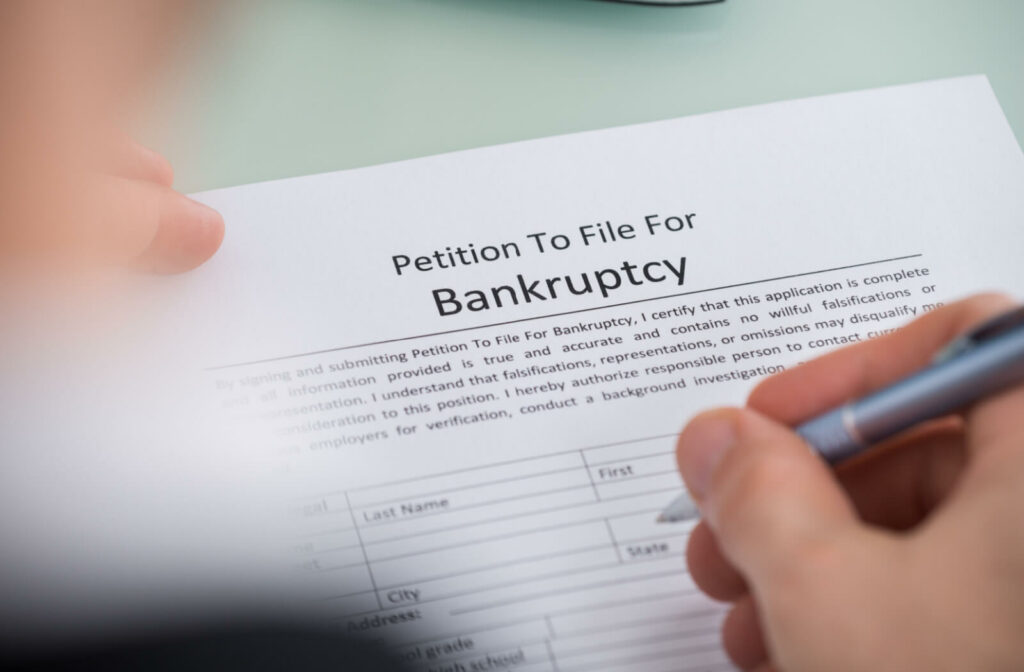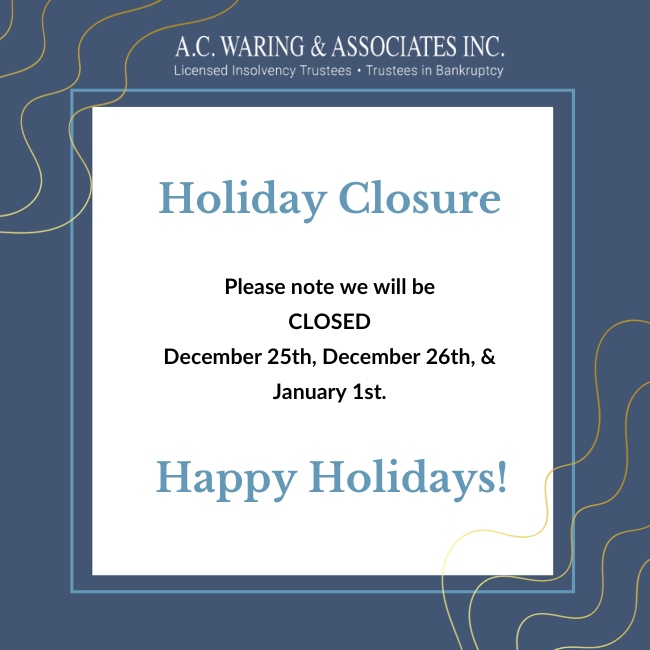Reducing or getting out of debt altogether can be a difficult decision. Sometimes, it can feel like overcoming decision making inertia. Many people assume they must declare bankruptcy if their debt is too difficult to manage. However, bankruptcy is not your only option for relieving debt.
A consumer proposal may be the right solution for some, but what is the difference between it and bankruptcy?
Bankruptcy or a Consumer Proposal Depends on Your Finances
The difference between these debt-relief options is that bankruptcy is the possible liquidation of non-exempt assets for the benefit of unsecured creditors, and a consumer proposal is a formal agreement between you and your creditors to reduce, and in most cases, to delay the terms of repayment.
A consumer proposal is generally for individuals with a source of income, or other resources, who can pay at least part of their debt. Bankruptcy is more for those who lack the income or other means to repay their current debt.
What Is Bankruptcy?
According to the Government of Canada, bankruptcy is the legal process eliminating debt. It is typically the best solution when you lack the financial resources to pay your debts and/or your creditors will not agree to a consumer proposal or other solution.
There are 3 avenues into bankruptcy:
- Deemed bankruptcy: Deemed bankruptcy occurs when someone has failed to get creditor approval under The Bankruptcy and Insolvency Act.
- Voluntary assignment: Voluntary assignment occurs when you formally assign yourself bankrupt.
- Involuntary assignment: Involuntary assignment occurs when one of your creditors files a petition to the King’s Court to render you bankrupt.
If you file for bankruptcy it is intended that you will continue to work and make a living.
When Should You Consider Bankruptcy?
Bankruptcy is only recommended in certain situations. In general, you should consider filing for bankruptcy if:
- Your credit cards are maxed either with high limits or multiple cards
- Your home is in foreclosure
- Your creditors have initiated lawsuits to recover their accounts
- Your credit cards or loans are necessary for bills
- The majority of your retirement funds and other assets have already been consumed

What Is a Consumer Proposal?
A consumer proposal can help relieve unsecured debts that do not exceed $250,000. This number does not include debt like your mortgage or your owner occupied home. It is a legal process where you file with a licensed insolvency trustee (LIT) to develop the proposal.
The Government of Canada defines a consumer proposal as an offer to creditors who can accept or reject it. You can pay a certain percentage of your debt, extend the time to pay off these debts, or combine both options.
Your LIT can recommend if a consumer proposal is a good option for you after they assess your situation. They will assist you to draft and submit the proposal and act as a middleman with your creditors.
While your LIT is essential for the proposal process, you have several responsibilities in the process, including:
- Providing your LIT with a detailed list of your assets and debts.
- Attending the first creditor meeting if 25% of the creditors request one.
- Participating in 2 counselling sessions.
- Helping your LIT write any address changes.
- Assisting your LIT throughout the proposal process.
How Do You File for a Consumer Proposal?
Filing a consumer proposal involves several steps, from the initial draft to approval. You can expect the following when filing your proposal:
- Your LIT files a proposal with the Office of the Superintendent of Bankruptcy. Filing the proposal allows you to stop making payments on the unsecured debts for the time being.
- Your LIT then forwards the proposal to your creditors, including a detailed report of your current situation and reason for financial struggles.
- Your creditors have 45 days to accept or reject the proposal in writing.
As needed, a creditor may request a meeting if they are owed 25% of the overall value of claims. This can occur within 45 days of your proposal submission. During this meeting it will be determined if the proposal is accepted or rejected.
If your creditor rejects the consumer proposal, you can declare bankruptcy, or consider other financial solutions such as a commercial proposal. If this proposal is accepted, you must:
- Pay a lump sum or regular payments through your LIT.
- Attend 2 financial counselling sessions.
- Follow other conditions in the proposal.
Address Your Financial Situation with Help from a Professional
Speaking with a licensed insolvency trustee can help you improve your financial situation, whether through a consumer proposal, budget management, or other potential solutions.
Contact us at A.C. Waring & Associates Inc. if you are in need of helpful debt solutions.





